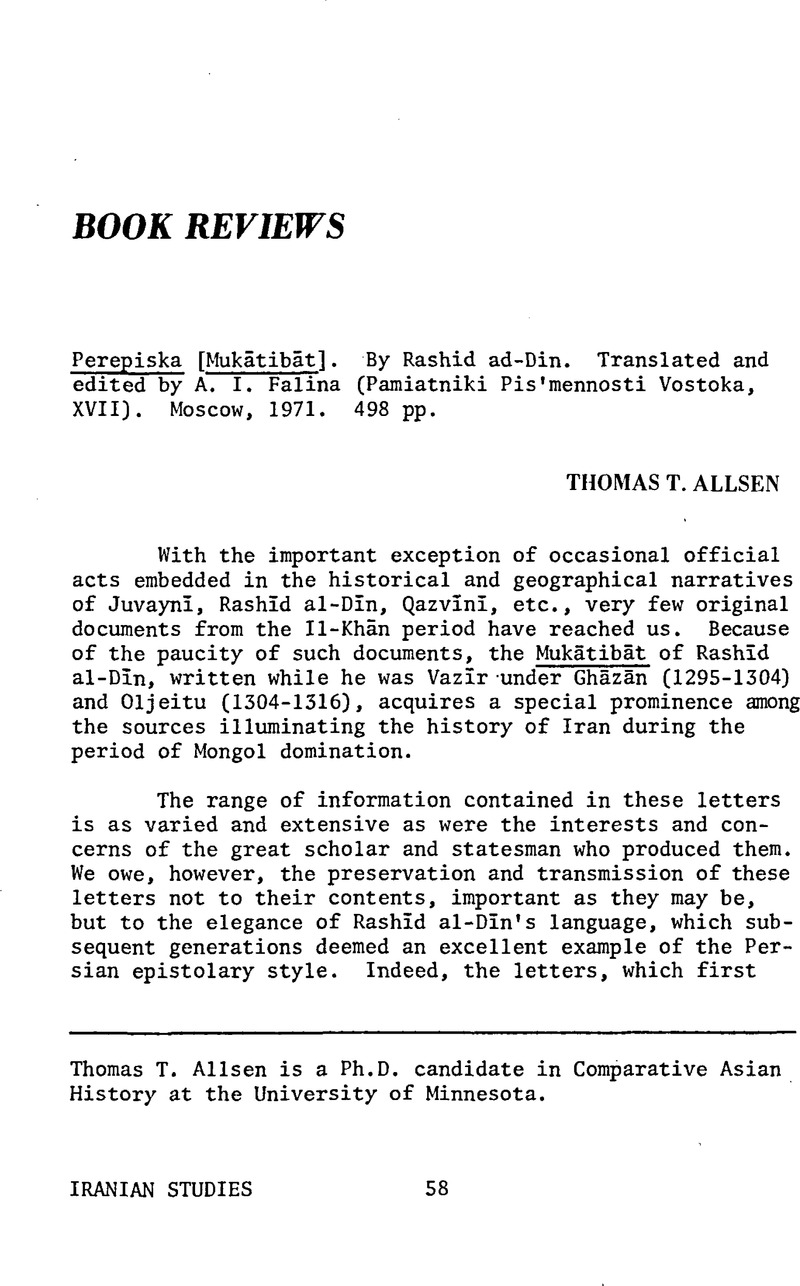No CrossRef data available.
Published online by Cambridge University Press: 01 January 2022

1. These numbers refer to individual letters in Falina's translation.
2. On the basis of this data, I. P. Petrushevskii has published a valuable study on Rashīd al-Dīn's personal wealth, “Feodal'noe khoziaistvo Rashid ad-Dina,” Voprosy Istorii, 4, 1951, pp. 86–104.Google Scholar
3. These reforms are studied in great detail by Falina, A. I. in her article, “Reformy Gazan-khana,” Uchenye Zapiski Instituta Vostokovedeniia Akademii Nauk, 17, 1959, pp. 51–76.Google Scholar
4. Mukātibāt-i Rashīdī, Lahore, 1947.Google Scholar
5. Photoreproductions of selections from this manuscript are given in the appendices, pp. 443-461.
6. See Arends, A. K., “The Study of Rashīd ad-Dīn's Jāmi u't-Tawārīkh in the Soviet Union,” Central Asiatic Journal, 14, 1970, pp. 40–61.Google Scholar
7. See Petrushevskii, I. P., “Izuchenie feodal'nogo obshchestva Irana v Rossii i v SSSR (1917-1970),” in Istorii Iranskogo Gosudarstva i Kul'tury: k 2500 letiiu iranskogo gosudarstva, Moskva, 1971, pp. 71–82.Google Scholar
8. Michel M. Mazzaoui's recent study, The Origins of the Ṣafawids: Sī'ism, Sūfism and the Gulāt (Freiburger Islamstudien, III), Wiesbaden, 1972, does make some use of the Mukātibāt-i Rashīdī. See pp. 23, 27, 53.
9. “The Letters of Rashīd al-Dīn Faḍl-Allah,” Journal of the Royal Asiatic Society, 1946, Pts. 1 and 2, pp. 74-78.
10. “K voprosy o podlinnosti perepiska Rashid ad-Dina,” Vestnik Leningradskogo Gosudarstvennogo Universiteta, 9, 1948, pp. 124–130.Google Scholar